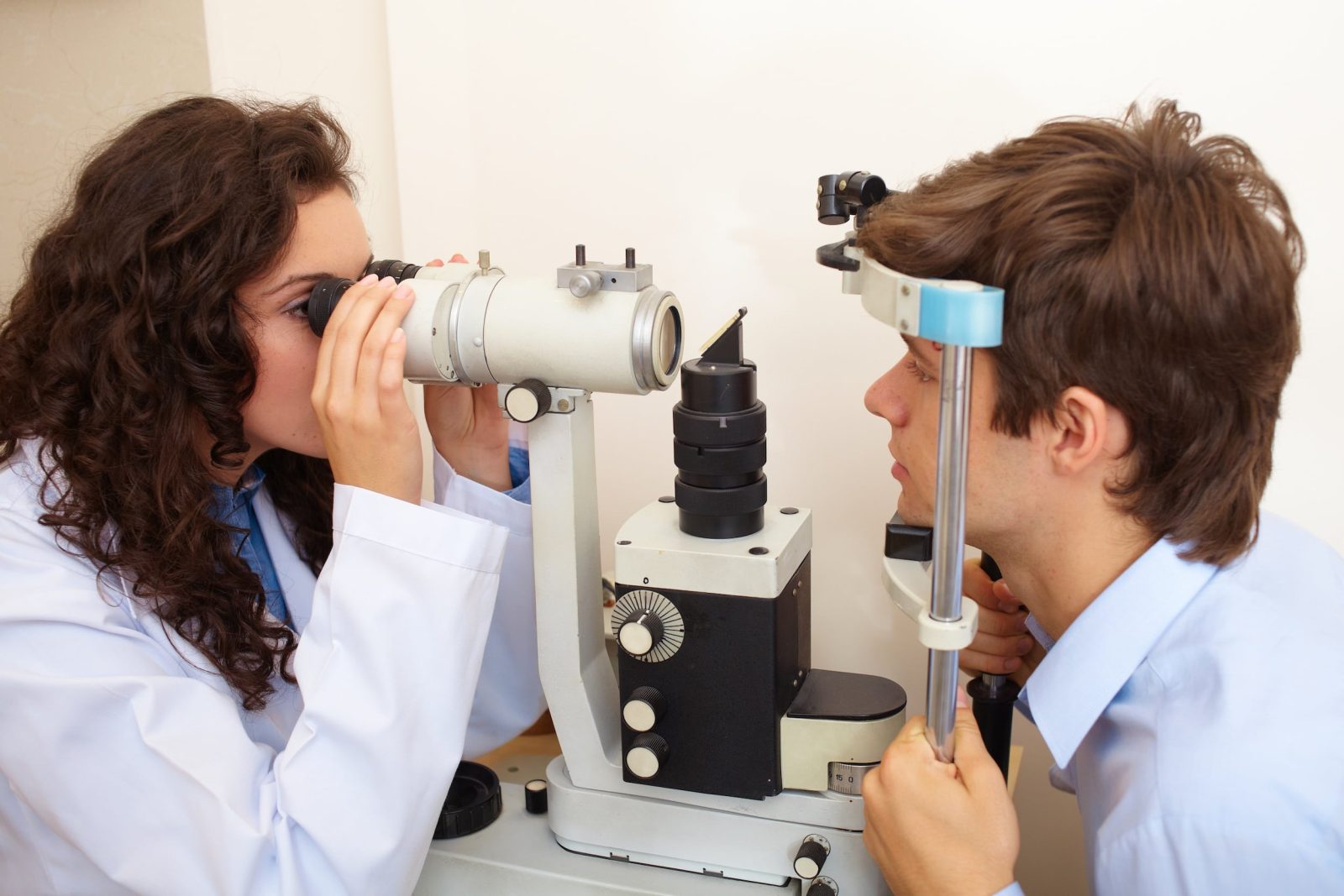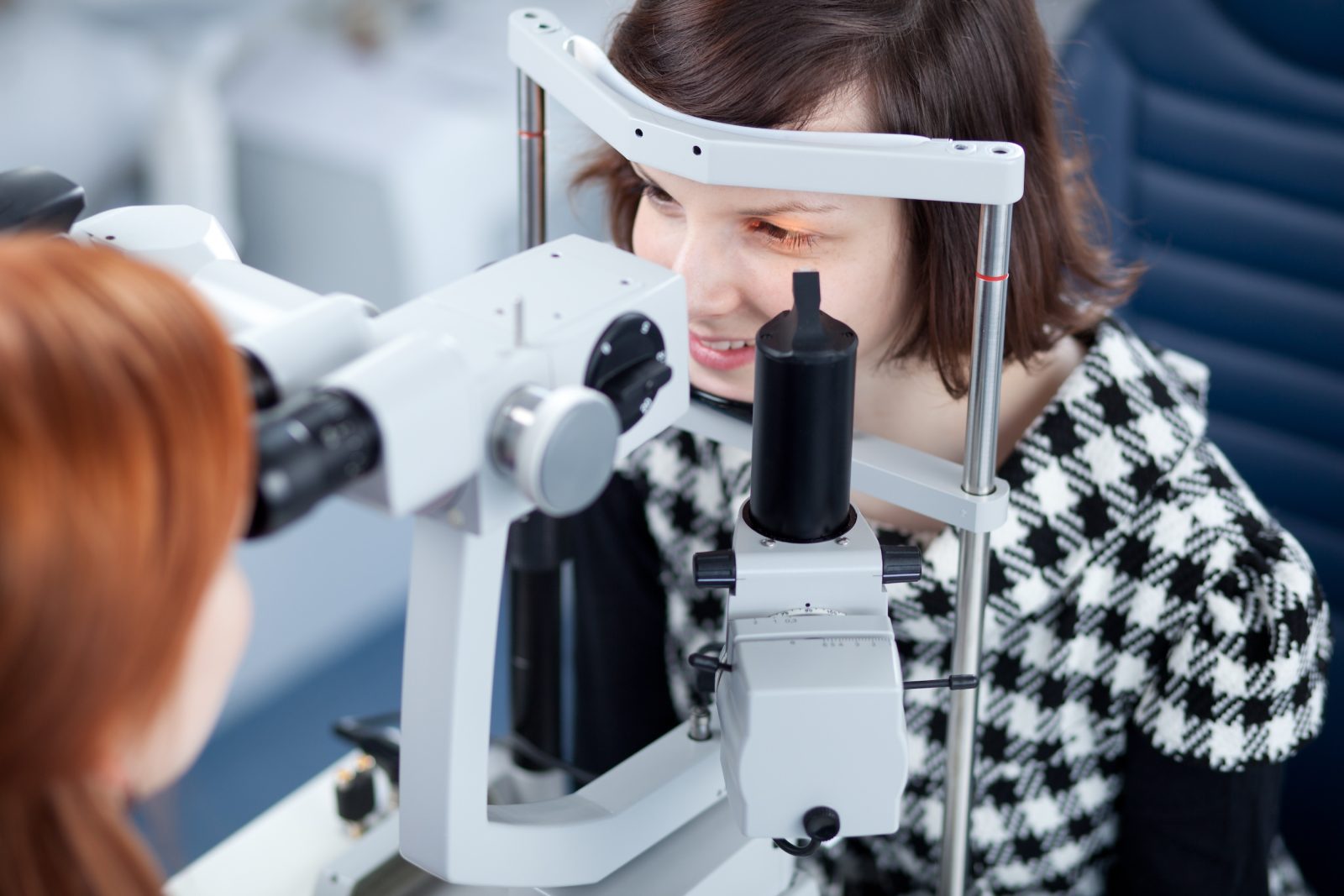
LASIK Safety
LASIK is a widely performed refractive eye surgery that has gained immense popularity since its inception in the 1990s.
One of the key factors contributing to LASIK’s success and widespread adoption is its remarkable safety record.
LASIK Eye Surgery: A Safe Path to Enhanced Vision
The safety of LASIK surgery is supported by a combination of factors, including regulatory oversight, high success rates, low rates of severe complications, advancements in technology, and ongoing patient satisfaction.

The procedure’s ability to provide stable, customized vision correction, coupled with its potential to enhance patients’ quality of life, make it an appealing choice for those seeking freedom from visual aids. While individuals considering LASIK should consult with a qualified ophthalmologist to assess their suitability for the procedure, LASIK’s overall safety record is robust and continually reinforced by scientific research and patient experiences.
LASIK surgery is a safe and effective option for individuals seeking to improve their vision. Its remarkable safety record is supported by rigorous FDA oversight, high success rates, minimal discomfort, and a strong emphasis on patient selection and education.
Advancements in technology and ongoing research ensure that LASIK remains a cutting-edge procedure with an ever-improving safety profile. While no medical procedure is entirely risk-free, LASIK’s safety is well-established, making it a viable choice for those looking to enhance their quality of life by reducing their dependence on glasses or contact lenses.
LASIK Safety Information
The safety of LASIK surgery is supported by a combination of factors, including regulatory oversight, high success rates, low rates of severe complications, advancements in technology, and ongoing patient satisfaction.
LASIK eye surgery has garnered considerable attention as a potential alternative to corrective lenses, prompting many to inquire about its safety. Evaluating the safety of LASIK involves examining its track record, technological advancements, and clinical research. We aim to provide an informed perspective on the safety of LASIK, drawing upon reliable sources and clinical data.
Understanding LASIK Safety:
When considering LASIK safety, two primary concerns arise:
- Safety as a Surgical Procedure: LASIK has been FDA-approved since 1998 and boasts a substantial history spanning over two decades. Its enduring popularity is underpinned by extensive clinical research attesting to its safety and efficacy.
- Safety for Individual Eyes: The safety of LASIK for an individual’s eyes hinges upon a thorough evaluation conducted during a consultation with an eye care professional. This evaluation is crucial for determining the suitability of LASIK for a particular patient, ensuring personalized care.
Examining LASIK Safety Through Research:
LASIK’s safety is bolstered by a wealth of scientific evidence and clinical studies:
- FDA clinical trials from 1993-2005 involved over 9,000 patients, providing foundational insights into LASIK safety and outcomes.
- Over 7,000 peer-reviewed studies since then have affirmed the procedure’s safety and effectiveness, while also addressing various aspects of LASIK.
Statistical Insights:
Statistical analysis reinforces LASIK’s safety profile:
- Complication rates from LASIK are estimated to be below 1%, with over 20 million procedures performed in the U.S. and a high patient satisfaction rate.
- Notably, less than 1% of patients experienced a loss of two lines of best-corrected visual acuity in a study encompassing 58,653 procedures.
Technological Advancements in LASIK Safety:
LASIK leverages advanced technology to enhance safety:
- High-definition evaluations enable precise customization of treatment plans, optimizing outcomes for individual patients.
- Femtosecond lasers, operating at ultra-fast speeds, facilitate the creation of corneal flaps with minimal disruption to surrounding tissue.
- NASA-developed tracking systems ensure precise laser application by monitoring eye movements and adjusting accordingly.
Navigating LASIK Decision-Making:
Making an informed decision about LASIK involves several steps:
- Conduct thorough research from reliable sources and seek referrals from friends or family members who have undergone LASIK.
- Consult with multiple eye doctors to gain diverse perspectives and ensure compatibility with your needs and expectations.
- Understand the recovery process and potential side effects, allowing for informed decision-making and post-operative care.
Addressing Candidacy and Risks:
Approximately 20% of individuals may not be suitable candidates for LASIK due to various health or medical reasons. It’s imperative to heed the recommendations of qualified surgeons and prioritize long-term ocular health over immediate desires.
Why Trust LASIK?
Modern LASIK stands as one of the safest elective procedures available today, supported by extensive research and technological advancements. However, it’s essential to acknowledge that no surgical procedure is entirely devoid of risks. By conducting thorough research, undergoing comprehensive evaluations, and engaging in thoughtful discussions with trusted eye care professionals, individuals can make informed decisions regarding the suitability of LASIK for their vision correction needs.

FDA Approval and Regulation
The laser equipment utilized in LASIK surgery is highly regulated by the United States Food and Drug Administration (FDA) . Before any LASIK procedure, patients must undergo a thorough evaluation to ensure they are suitable candidates. Only FDA-approved femtosecond and excimer lasers are used in LASIK surgery, and these lasers are regularly inspected to ensure they meet stringent safety standards.
High Success Rates
LASIK has consistently demonstrated high success rates in improving visual acuity and patient satisfaction. According to the American Society of Cataract and Refractive Surgery (ASCRS), over 95% of LASIK patients achieve 20/40 vision or better without the need for glasses or contact lenses. The vast majority of patients report significant improvements in their quality of life post-surgery.

Minimal Pain and Rapid Recovery
LASIK is a minimally invasive procedure performed with the help of numbing eye drops. Patients typically experience little to no pain during or after the surgery. Furthermore, the recovery process is relatively quick, with most patients returning to their normal activities within a day or two.

Advanced Technology
Advances in technology have greatly improved LASIK safety. Modern LASIK procedures often use wavefront-guided or custom LASIK, which tailors the treatment to each individual’s unique eye structure. This customization enhances accuracy and reduces the risk of complications.

Low Risk of Infection
LASIK is a sterile procedure that minimizes the risk of eye infections. The corneal flap created during LASIK surgery acts as a natural bandage. Additionally, post-operative antibiotic eye drops further decrease the risk of infection.

Long-term Safety
Numerous long-term studies have confirmed the safety and stability of LASIK outcomes. For example, a study published in the Journal of Cataract and Refractive Surgery in 2016 followed LASIK patients for 10 years and found that their visual acuity remained stable, with low rates of complications.

Patient Selection and Screening
LASIK surgeons rigorously evaluate patients before surgery to identify any potential contraindications or risk factors. Patients with certain conditions that may increase the risk of complications may not be considered suitable candidates for LASIK.

Patient Education
Informed consent is a crucial component of LASIK surgery. Patients receive detailed information about the procedure, potential risks, and expected outcomes before making an informed decision. This emphasis on patient education ensures that individuals fully understand the procedure’s safety and benefits.

Low Complication Rates
While no surgery is entirely without risk, LASIK has a remarkably low rate of complications. The most common side effects include dry eyes, glare, halos, and light sensitivity, which are usually temporary and can be managed effectively.

Continual Advancements
LASIK technology continues to evolve, with ongoing research aimed at further improving safety and outcomes. New techniques and technologies, such as SMILE (Small Incision Lenticule Extraction) and femtosecond lasers, are being developed to provide even safer and more precise vision correction.

Low Rate of Severe Complications
Severe complications from LASIK surgery are exceedingly rare. While some patients may experience mild side effects like dry eyes or glare, the occurrence of sight-threatening complications is extremely low. According to the American Refractive Surgery Council, LASIK has never been the primary, exclusive cause of blindness.
Stability of Refractive Outcomes
LASIK offers stable and long-lasting vision correction. Many patients experience stable vision for years, reducing the need for future interventions. This stability is especially significant when compared to the ongoing maintenance and costs associated with glasses or contact lenses.
Customized Treatment
LASIK has evolved to incorporate advanced diagnostic tools and customized treatment plans. Wavefront-guided LASIK, for example, maps the unique imperfections of an individual’s eye, resulting in a more precise and personalized vision correction. This customization enhances safety and optimizes visual outcomes.

Improved Night Vision
LASIK technology has advanced to address common nighttime vision issues like glare and halos. Wavefront-guided LASIK, in particular, has been shown to improve night vision in many patients, contributing to safer and more comfortable driving and nighttime activities.

Quality of Life Enhancement
LASIK surgery often leads to a significant improvement in a patient’s quality of life. Many individuals report increased confidence and a greater sense of freedom after LASIK, as they are no longer dependent on glasses or contact lenses for daily activities.

Patient Satisfaction
High levels of patient satisfaction with LASIK reflect the procedure’s safety and efficacy. Surveys and studies consistently demonstrate that the vast majority of LASIK patients are pleased with their results and would recommend the procedure to others.

Rigorous Post-operative Care
LASIK surgeons provide thorough post-operative care to monitor patients’ progress and address any concerns promptly. This commitment to patient well-being ensures that any potential issues are identified and addressed early, minimizing the risk of complications.

International Recognition
LASIK has gained international recognition as a safe and effective vision correction procedure. It is performed in countries around the world, with millions of successful surgeries conducted annually, further highlighting its safety and reliability.

Patient Testimonials
Anecdotal evidence from countless LASIK patients attests to the safety and life-changing benefits of the procedure. Many individuals share their positive experiences and the newfound freedom from glasses or contacts after LASIK, contributing to its reputation as a safe and transformative surgery. Testimonials and reviews reflect individual experiences. As with all medical procedures, individual results will vary.
Sources
- Solomon, R., Donnenfeld, E. D., Perry, H. D., & Doshi, S. J. (2009). LASIK world literature review: quality of life and patient satisfaction. Ophthalmology, 116(4), 691-701.
- American Academy of Ophthalmology (AAO). (2021). LASIK: Safety Profile.
- Randleman, J. B., & Stulting, R. D. (2008). Corneal ectasia after LASIK: screening, diagnosis, and treatment. The Ocular Surface, 6(3), 154-167.
- Lindstrom, R. L. (2002). LASIK: Techniques and complications. In Ophthalmic Surgery: Principles and Practice (Vol. 1, pp. 521-541). Saunders.
- Kim, T. I., Alió del Barrio, J. L., Wilkins, M., Cochener, B., & Ang, M. (2019). Refractive surgery. The Lancet, 393(10185), 2085-2098.
- American Society of Cataract and Refractive Surgery (ASCRS). (2021). LASIK Patient Information.
- Hersh, P. S., Lahrach, M. A., Brint, S. F., & Maloney, R. K. (2016). Long-term Outcomes after LASIK. Journal of Cataract and Refractive Surgery, 42(3), 453-462.
- U.S. Food and Drug Administration (FDA). (2021). LASIK: Approved Devices
- Solomon, Kerry D., et al. “LASIK world literature review: quality of life and patient satisfaction.” Ophthalmology, vol. 110, no. 7, 2003, pp. 1371-1382.
- National Eye Institute. “Facts About LASIK.” National Institutes of Health, U.S. Department of Health and Human Services, Accessed 16 Apr. 2024.
- American Academy of Ophthalmology. “Refractive Errors.” EyeSmart, Accessed 16 Apr. 2024.
- Randleman, J. Bradley, et al. “Risk factors and prognosis for corneal ectasia after LASIK.” Ophthalmology, vol. 115, no. 3, 2008, pp. 191-192.
- Sugar, Alan, et al. “Laser in situ keratomileusis (LASIK) for myopia using a 1000-Hz excimer laser.” Journal of Cataract & Refractive Surgery, vol. 42, no. 9, 2016, pp. 1224-1233.
- American Society of Cataract and Refractive Surgery. “LASIK FAQ.” ASCRS, Accessed 16 Apr. 2024.
- Mayo Clinic Staff. “LASIK eye surgery.” Mayo Clinic, Accessed 16 Apr. 2024.
- U.S. Food and Drug Administration. “LASIK Quality of Life Collaboration Project.” FDA,Accessed 16 Apr. 2024.
- Talamo, Jonathan H., et al. “Visual outcomes after wavefront-guided laser in situ keratomileusis and wavefront-guided photorefractive keratectomy: prospective comparison.” Journal of Cataract & Refractive Surgery, vol. 32, no. 5, 2006, pp. 796-801.